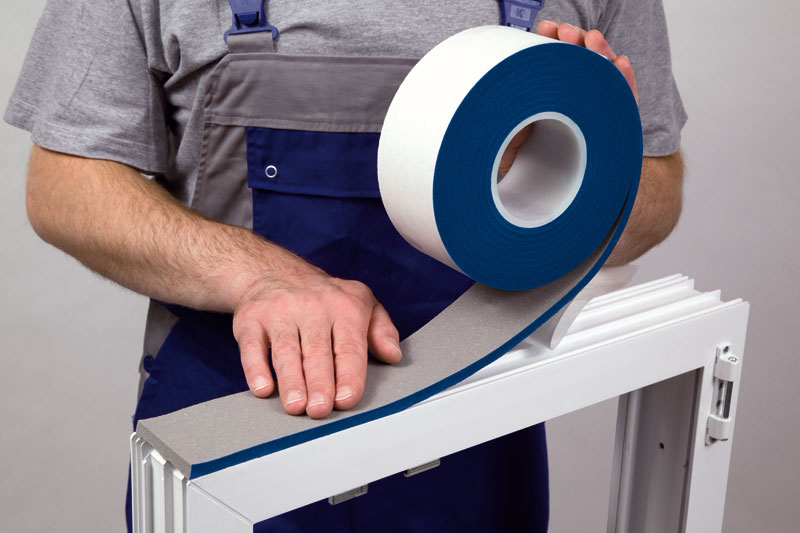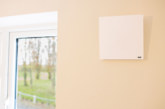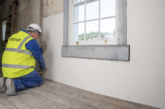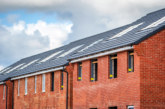 Andy Swift, Sales and Operations Manager, UK & ROI for ISO-Chemie, says changes to Building Regulations will impact on the energy efficiency of windows and doors.
Andy Swift, Sales and Operations Manager, UK & ROI for ISO-Chemie, says changes to Building Regulations will impact on the energy efficiency of windows and doors.
Under current regulations, all new building designs are benchmarked against parameters such as the thermal performance of materials, the orientation and size of windows, airtightness and heating and ventilation systems — designs must comply with these if they are to progress to the next development stage.
Now, proposed changes to reform Part L of the Building Regulations will see provision for stricter standards and compliance procedures around energy and ventilation performance in homes across England. In particular, the move reflects the Government’s eagerness to see proposals for current standards, outlined in Part L of the Building Regulations, to be adapted to future-proof homes against increasingly strict carbon emissions targets.
Despite intentions to drive through the changes, the Government’s plans have met with widespread criticism. Some experts believe that they will make buildings less energy efficient, not more; going as far as to describe the changes as ‘a step backwards, in a climate where we need a huge leap forward’.
The changes to the regulations would see removal of the Fabric Energy Efficiency Standard — in effect, a building designed in 2021 could be allowed to perform worse than one built in 2013, when the current standards were introduced. Similarly, a building that would fail to meet existing regulations would get the green light under the new system.
So, at a time when the built environment accounts for more than 40% of UK carbon emissions, construction and specification products manufacturers are yearning for change to the regulations to drive more stringent energy standards. Yet, it could be said that the new proposals offer little in the way of reassurance and could mask the real energy efficiency of a house, showing performance levels better than they are.

Lack of understanding
What the proposed reform of Part L does reveal to those at the sharp end of fenestration specification in the UK is a perceived lack of understanding, indeed indifference among government decision makers when it comes to propagating more energy efficient housing, rebuffing simple yet effective home insulation measures that could help people to pay less than they need to tackle climate change.
Undeniably, home insulation installations are among the cheapest carbon cutting measures, reducing energy bills by £100 a year on average. However, the cancellation of government incentives has seen a 95% fall off in work in this area since 2012, according to the Committee on Climate Change.
Despite great strides in modern housing design and development, evidence points to doors and windows continuing to be among the biggest culprits when it comes to energy inefficient homes. Indeed, it might be said that in the light of product innovation, its almost ‘criminal’ that so many fenestration installations remain unchecked or unregulated, leaving a legacy of problems that last for years and cost hundreds of thousands of pounds to rectify.
 This is a pity because with advancements in cost-effective, simple to use technologies, there’s no longer any justifiable reason for procrastination around the specification of energy-efficient window and door sealing solutions.
This is a pity because with advancements in cost-effective, simple to use technologies, there’s no longer any justifiable reason for procrastination around the specification of energy-efficient window and door sealing solutions.
Heat will always find the fastest exit as it comes up against the ‘A’ or ‘A+’ rated window, and invariably this emanates from the 10mm or so expansion gap left around the window following fitment. This is normally left empty, but some amount of spray foam can be injected to fill the void before a silicone trim is applied for a smart looking finish.
Unfortunately, as expedient as this might sound, none of these solutions create a measurable, long term, high performance thermal, acoustic or airtight barrier – the U-Value of the installed window is simply reduced, which leads to heat escape and ultimately, financial loss.
If Building Regulations remain lenient, we will continue to see window and door developments that only just comply with the minimum standards. But the industry deserves better insulating products to improve energy efficiency and save money for their end-users, and self-adhesive foam sealing tapes, which use ‘smart’ foams impregnated with different substances to create a measurable U-Value as low as 0.6w/m2k, offer superb thermal insulation and can contribute to acoustic sound reduction by 63dB.
As these installation tapes are completely weather tight against driving rain up to hurricane force wind speeds, installers can quickly apply them around the frame during initial fitting. This provides the assurance that they have completed a comprehensive ‘A’ rated installation rather than just supplying an ‘A’ rated window. This is a benefit that can be sold on to deliver enhanced energy efficiency advantages for customers and property owners.
Technical innovation
There’s no question that those responsible for fenestration specification can do more to support greater energy efficiency. Technical innovation through sealing technologies is one way that this can be achieved. Indeed, as sustainability continues to be paramount in the development of low carbon and eco-friendly housing schemes, we are seeing technologies such as foam tapes gaining traction as effective solutions for sealing window and doorframe expansion joints and gaps in houses.
Current energy efficiency regulations need to be overhauled as the UK has a legal commitment to achieve net zero carbon by 2050. However, the proposed changes fall short and further reflection of Part L is required to develop solutions to deliver a zero-carbon further. The challenge remains for technologies to provide those at the sharp end of designing the built environment with the confidence to assure customers that energy efficiency is at least as good as the window.









